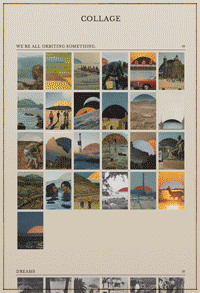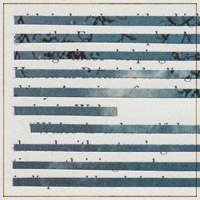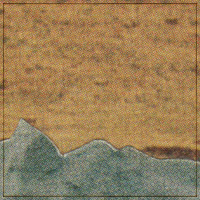Victoria Masters: Music Felt Through the Lens

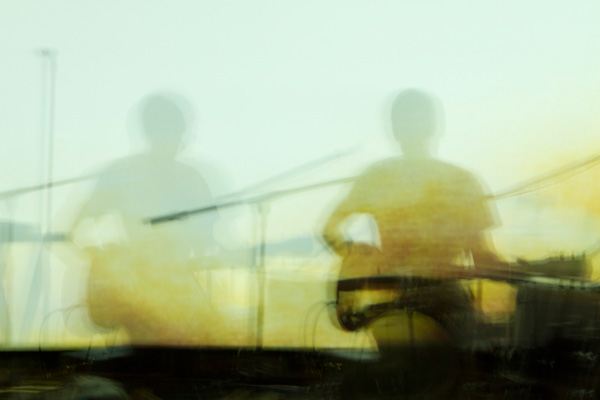


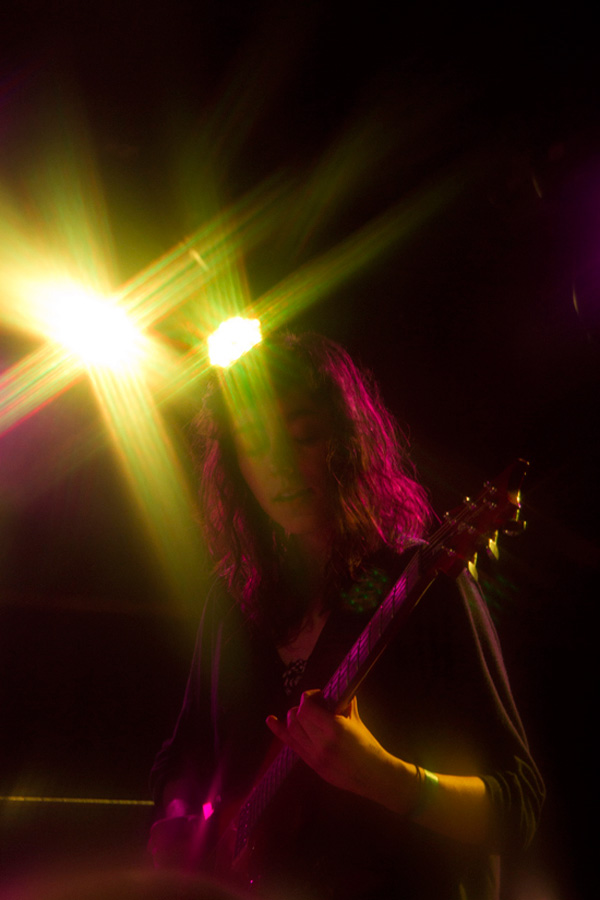









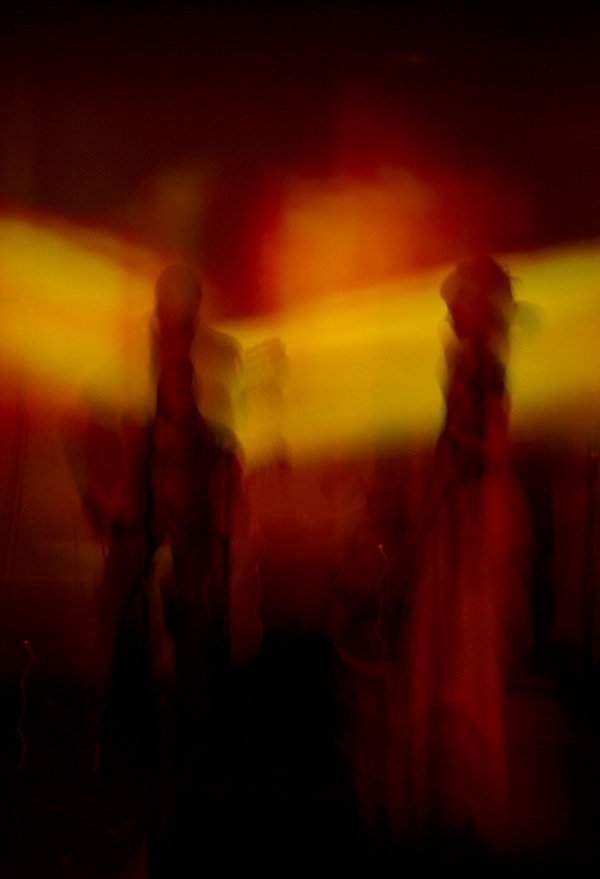


I believe in a soul; not necessarily in a religious context, but certainly in a spiritual one. Places hold them —people, ideas, events. I believe experiences enter their purest state when souls are communicating, and this happens often within art. Musicians understand this shared energy. And with live performance, they hope to inspire it. There are shows when a room can collectively glow or charge or even gravitate. These are beautiful yet fleeting occurrences, and rarely ever documented truly. But some have a gift…
Through photography, Victoria Masters is able to send you to that suspended realm, whether you were once there before or not. I’d admired her work for some time, as she’s one half of the music blog Stadiums and Shrines, but it wasn’t until I stood next to her at a Julianna Barwick set during SXSW that I fully understood. Looking over at the tiny screen on her camera after each shot, I realized she was capturing not what was in front of us at face value, but the images of our perception. Each time I return to one of her pictures, I don’t simply see a night, I feel it.
The images that opened this piece were selected to represent 2011; in other words S&S has decided to host their annual Year in Photos here, and even more kindly, Victoria was down to chat about her craft, process, and future plans.
Can you tell us a little about your photographic background and how you started shooting shows?
It started with a photojournalism class I took in college. I went to Senegal for a summer abroad program where we documented current events in and around Dakar. It was instantly so inspiring. I was taken in by all the colors and skin tones, and the way the French African culture juxtaposed with poverty. I went on to major in graphic design but never really stopped studying photography. After school I took six months to travel Southeast Asia and shoot. Upon return I participated in some small gallery shows and an international touring exhibit about children living in poverty. When I moved to New York six years ago, I began more classes at the International Center of Photography in Manhattan and have kept taking them since. Somewhere between then and now that background blended with my love for music and living in Brooklyn, and I started shooting shows. Then when S&S entered my life there was good reason to continue.
When I learned that you don’t use Photoshop to alter your images I was utterly amazed, still am. Without giving away any secrets, can you share some of your process?
Yeah there was some concern that people were going to think these were just altered in post which felt untrue to my process. Similar to photojournalism, there’s a story to be told, an emotional connection between subject and audience, we all want to feel that intensity and beauty, and it’s your responsibility to capture it evoking as much emotion and realness as possible. So, well, yea that’s what I try to do—I use some slow shutters, flash delays, and soften edges to get the vision all better realized. I work a lot with the lighting of a space, you really need to adapt to it to feel comfortable.
You’ve developed a very distinct and effective visual language. How do you prepare for a night of shooting and how much of the outcome is a result of simply being in the moment?
I usually bring a bag that has my Canon 7D, a few lenses, vaseline, red lipstick and my hotshoe flash. And I’m usually groaning about how I dont want to be out until 2am on a Tuesday, but once I get there my mood just flips. I start to feel what’s happening and it all just comes together… eventually. Certain venues, crowds, and lighting can really determine how challenging a shoot it will be. I can get frustrated at times and that’s when I just try something totally different, and then pass my screen over to Dave for the smile of approval (I have a scale of reactions to rate from) and carry on.
Do you have any favorite bands to photograph? Any particular qualities you’re inspired by?
Shooting Handsome Furs was my highlight of the year but I think my favorite band to photograph is Twin Sister. We’ve covered them a number of times and I’m always taken by Andrea’s presence, and their lighting is always rad. Second would be Born Gold, for obvious reasons. I like the energetic bands. It can get more tricky when shooting some of these one-person electronic acts, where there isn’t much going on, that’s when I really try to translate more of a sound or mood.
Lastly, what do you see yourself working on in the future? Are you exploring any new avenues your work could travel down?
Seems I am never not starting a new project. There’s this ongoing Portraits project that includes shooting friends in their environments, and I’ll be doing more band press photos this winter. I rarely pass up opportunities, I’m addicted to this whole lifestyle. I’ve also been experimenting in film this year—I shot/edited a live visual projection for a 45 minutes dance performance and a few months back did a music video feature on our roof. We’ll see where video goes…
Thank you Victoria.
Bands pictured from top down: Dirty Beaches, Two Bicycles, Grimes, Big Troubles, Braids, Born Gold, Julian Lynch, Megafortress, RxRy, Pictureplane, Born Gold, Dustin Wong, Handsome Furs, Blue Hawaii, Holy Spirits, WU LYF, Julianna Barwick.

Think or Smile Holiday Giveaway


Blogging is a bizarre activity. Passions are translated to code then buried on a digital mountain side, hoping someone will find them. At times it’s easy to feel disconnected from reality while sitting behind this computer screen, yet that is what’s celebrated here: reality, art, life. Without you—readers, artists, collaborators, friends—Think or Smile wouldn’t be. That said, I’d like to take this opportunity to show my continued appreciation for both your inspiration and support by bringing back the (now annual) holiday giveaway.
To my surprise, quite the package has come together over the course of just one day, which is a true testament to the generosity of this community. Existing primarily virtually, I think its important to remember that a lot of what I share here and love are physical objects, so included in the giveaway are some of my favorite releases, donated and signed by good friends, along with a New Directions book that traveled with me for a good part of the year, inspiring my own art, which I’ll also include an original of.
Here’s the treasure chest one winner will find at their doorstep: A signed copy of Gem Club’s “Breakers” on vinyl, an out-of-print 12″ of Monster Rally’s “Coral,” signed along with an original drawing of his. The Holy Spirits/Mutual Benefit split “Mutual Spirits” on vinyl, the Mutual Benefit/Philip Seymour Hoffman split on cassette and a signed copy of Teen Daze “A Silent Planet” on CD. I asked RxRy to include an album, instead Rx went into the lab and made an entire mix of (partially unreleased) sounds – “a.GFT” one-of-a-kind CDr in handmade packaging. It’s an Rx original art piece and will be yours alone to space to. New Directions Publishing has been kind enough to donate a copy of Eliot Weinberger’s “An Elemental Thing,” a favorite book on mine this past year. I’ll also hand make a new Thought Orb collage for you.
How to enter: Simply share a comment below. What on the site did you enjoy most this year, or what would you like to see more of next year? Or just say hello. I like hearing from you.
Please, only one entry per person. It will end on 12/25/2011 at midnight EST. I’ll randomly select one winner and notify by email in the days following.
Much love.
UPDATE 12-26-2011: …And the randomly selected winner is Peter A. Thanks to everyone for entering! Here’s to another wonderful year.

Free Music Collection: December 2011

Gifts worth giving are often intangible, even unspoken. They’re felt—sensorial moments; sights, scents, and sounds. They’re cherished because they bring happiness, or clarity or solace; they can lift, reawaken or recast a light from the past. They become who we are. True gifts, both given and received.
We hope you will find new sounds, new joys within ours.
Free Music Collection: December 2011
- Giraffage – Comfort: Finely crafted beats overlaid with a blanket of lush ambiance, as comforting as a warm blanket in winter.
- Egyptian Maraccas – This Is So Random: A massive mixtape of our favorite producers, making new things out of old, making us feel hot and steamy.
- It is rain in my face. – TAWS: Speaker Snacks Records keeping its untainted record going with this eclectic album from Brooklyn producer Matthew Jones.
- Glass Vaults – Into Clear EP: Soundscapes to set the stage for your mental escapades, through cerebral valleys, over metaphysical mountains capes.
- Hollow Pigeons – Birthdays: Birthdays flows soft and lightly from start to finish, bringing us what can only be an impressive start to a hopefully long life of blissful production.
- Symmetry – LYFSTYL 006 Mixtape: Compiled from some of my favorite bloggers, a mixtape to get you in the mood for a cooler season.
- Invisible Children 2011 Benefit Show Mixtape: My homies over at IC put together a mix for their benefit show, if you’re in the LA area this Christmas, you need to hit this up. This year features The Mountain Goats, Fruit Bats, Ivan and Alyosha and more.
- Head Underwater Whitehurst Frwy Mixtape: You can always count on Jimmy for a good mood-mix.
- Caribou’s ATP Mix “Nightmare Before Christmas”: If you can’t make it to the Nightmare Before Christmas ATP Music Fest, you can grab Caribou’s mixtape of it and pretend you’re there. That’s what I do in lieu of you know, actually going to shows.
- YOUNG ATHLETES LEAGUE – NTMIX002: I felt cooler after listening to this. Have you checked out Neighborhood Tapes yet?
- David Lynch & ‘Big’ Dean Hurley Mixtape: So David Lynch made a mix for The Stool Pigeon. That’s crazy, right? (Stream only)
- MFR – HOTT Mix: You can always rely on MFR for bold helvetica posters and mixtapes that have all the hits. This one makes me forget November’s already passed us by. (Stream only)

Think or Smile
- Korallreven – ‘Ra Ra Rave On’ Mixtape: Swedish sun-strokers dig into their 90s techno 12″ crates and drop the needle on FSOL for Self-Titled Magazine.
- Maayan Nidam live at Lessizmore: house music. love music.
- Dreampeter – Mason Jar (single): Ann Arbor experimenters combine to elevate the dream world.
- RxRy – SLPR (suite): this is for the night. and the attentive: only first 50 emails to RxRy receive download.
- Arae – The Longest Night: “a journey through introspective beatscapes and finely-tuned vocal samples.” – Flashlight Tag
- Low Light Mixes – drowsy: a sonic cocktail of Percocet & Vicodin.
- Ambassador Engine – Subtraction, Elation, Hydration.: guitar-scapes traversing moments of natural clarity and far off lands of distorted skies.
- Headaches – I Wasn’t Born Yesterday EP: theme and variation. ambience and rediscovered textural loops within.
- M. Sage – Music for Interior Shadows: Colorado’s Matthew Sage dove into a stack of old records with the idea of finding minimal chunks of sound and turning them into absent compositions. What resulted is a pure and tragic, era-bending experience. Those dark corners that sharpen each hall, the cold mirror still cued with a makeup box at its feet, the dust covered gramophone, and the lamp who’s bulb has since long passed; she’s air-waltzed away forever…
- Bad Passion – Doin’ It Slow: Extra cool, minty fresh boy/girl dialogue on a floor-level mattress. No lights, probably candles, definitely a little weed; they plot of stealing cars and covering Beach House.
- Foxes in Fiction – Guest Mix for Diamond Atlas: The angel Warren crafted a beautifully eclectic 30 minute reflection of his favorite headspaces and healing music, accompanied by personal and well-considered thought pieces for each song. He goes Azeda Booth into Arthur Russell, and my heart warms.
- Ricky Eat Acid – seeing little ghosts everywhere: There’s a whole world inside here. Like a toy world, with toy pianos, and little toy ghosts flying around, everywhere, under the 8-bit stars. It feels like ones we knew as kids and then somehow forgot. But Sam Ray didn’t, thank you Sam.
- Unravel – I Knew This Would Happen: Some brass wind chimes begin to dance, a harp joins in. A giant hand tweaks from above, like club remixing the whole sequence. Then a robot on a hilltop recites the first verse of Kayne’s “Love Lockdown”… maybe this Unravel person did, but I certainly did not, *know this would happen*.
- Casual Ocean – Goodbye Money: Lester Brown is back, as Casual Ocean, suddenly a soothing, twisted tenor on an R&B kick.
- Vinyl Williams – Lemniscate: Had we known about this pysch summit back at its August release date, we could have been climbing in tie-dye tank tops and saluting the sun with pixie dust. Actually, there are no seasons in space, so we’re good.
Support music you love. See shows, buy physical releases, show love.
Note: Due to bandcamp’s terms of service artists are required to charge a minimal price after a certain number of free downloads. If that’s the case after our posting you can always stream it and if it moves you, support them with a purchase.

Microscopic Worlds: Ecosystems invisible to the naked eye






Human eyes are the great window into a world surrounding us, but what a universe we would see if they were capable of 100x magnification. If witnessing a brachionus rotundiformis’ meal pass through its translucent body or seeing a water fleas’ heart beat were a daily occurrence, what an astounding awareness we would have. Realizing the vast scale of nature and how vital each element is to our chain of existence, both up and down the evolutionary web is a powerful thing.
Explore more notes from Daniel Stoupin’s dreamworlds or support his vision by purchasing prints.

Musical Eyes: Gem Club on Japanese Boro
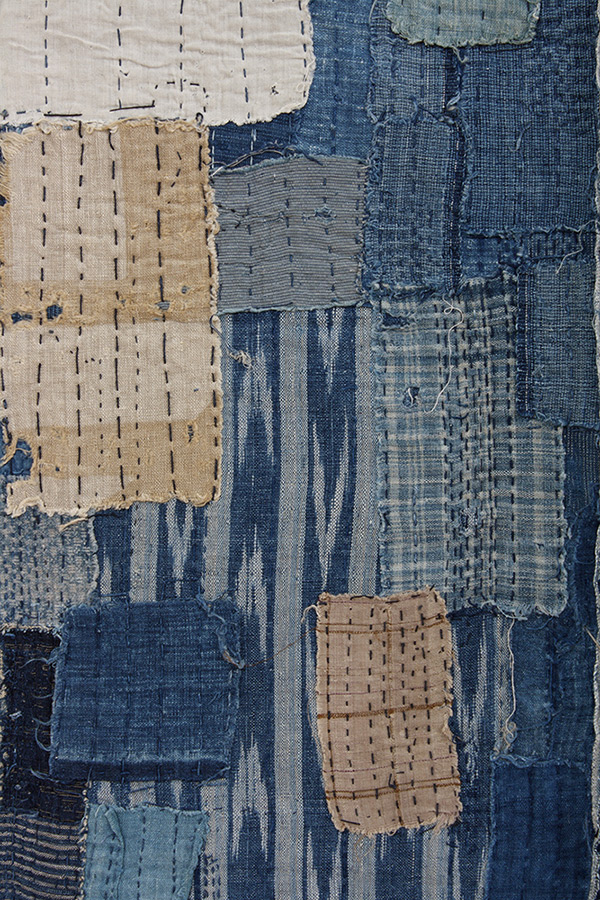









Few things put me at peace the way Gem Club does. Like staring at the moon, with stars dimming out of focus, clouds at all sides, churning with a rain that never falls—it’s a melancholic kind of contemplation, yet ever-assuring, as I know that this pure, unrelenting beauty lies just out of reach, just one squint away.
Gem Club, comprised of Christopher Barnes and Kristen Drymala, has soundtracked many a late night while I’ve worked on my own art, often making me wonder what types of visual influences might exist behind the sound fueling mine. Christopher has been kind enough to open up his and his partner Jared’s personal collection of textile art, as well as, chat for a few on his path to music and his admiration for Japanese boro.
I know very little about Japanese boro, can you tell us a little about what it is and it’s history?
In rural Japan back in the 19th and into the early 20th century cotton was very scarce. Most early Japanese garments were made of hemp, but for northern Japan these clothes had to be thickly woven, were often uncomfortable, and did not retain warmth very well. So when cotton was introduced to Japan, it was seen as a luxury item for rural poor. Cotton was brought from warmer districts such as Osaka and other cities by ships, where people bought fragments instead of a cloth roll as it was less expensive. It was common for these textiles to be passed down through generations, where they would be patched and mended to reinforce them for the next user. It’s sort of an unintended art form, which highlights preservation and the importance of reuse and recycling.
You hold degrees in fields outside of music. For you, was music an unintended art form? What paths lead you to form Gem Club?
In some ways yes. For a long time there was no real path. Well, I mean I was making choices that would ensure that there would be none. I had graduated from university…I’m not quite sure how that was pulled off. I was very much a mess. Somewhere in there I decided that I wanted to go back to school for music but I was having a difficult time keeping sober and going to school. School wasn’t a joke either, I think sometimes people think that going to study music means you’re playing the guitar all day. That’s part of it, but there’s a lot more going on – composition, ear training, theory. I had written songs before I went to school, and they were very personal and I never played them for anyone. They were also very bad. School forced me to have to perform in front of an audience, something I don’t think I would have otherwise ever attempted. In that way, I feel like had I not gone to school much of what would later happen with Gem Club would never have surfaced.
Boro are deceptively simple, made of only cotton, indigo and thread, somewhat mirroring the elements you use to compose your music–piano, voice and strings. Both achieve an incredible amount of depth from so few raw materials. Can you speak to this minimalist philosophy that seems to underline both the art you collect and the music you create?
This is an interesting question and something that I’ve never really thought of before. I feel like people would notice these flaws, the holes that needed to be repaired and they would cover it up, they would mend it. I don’t really think they would think twice about it, I mean which piece would go where. You saw that your jacket had torn and you fixed it because you didn’t want the hole to get bigger or you didn’t want to be cold or whatever. I don’t think there was a lot of concern for aesthetics. We admire these pieces for the unintended end result–the insane array of patches and stitching–but to the Japanese, the heavily patched side would typically be hidden.
I think with my work I tend to obsess about the missing pieces, often to my detriment. It makes me nuts. I remember working on Lands for weeks trying to find the right textures for the horn and the cello to fit underneath the chorus. There is a lot to learn from boro–not only about the history of the textile and the people who were using them, but also in it’s creation. Instead of fussing over these holes, worrying what piece should go where, or waiting around for that perfect piece to surface, the garments were just patched and with time you could eventually step away from these objects and see this fantastic end result.
Thank you Christopher.
You can explore more of Gem Club’s music on their website and stream both the LP, Breakers and EP, Acid and Everything here. I highly recommend you get a copy of Breakers (on white vinyl) while it lasts.
All images above are courtesy of the collection of Christopher Barnes and Jared Graves. I want to extend a very special thank you to Jared for photographing all of these for us.

Think or Smile | Nathaniel Whitcomb © 2011







